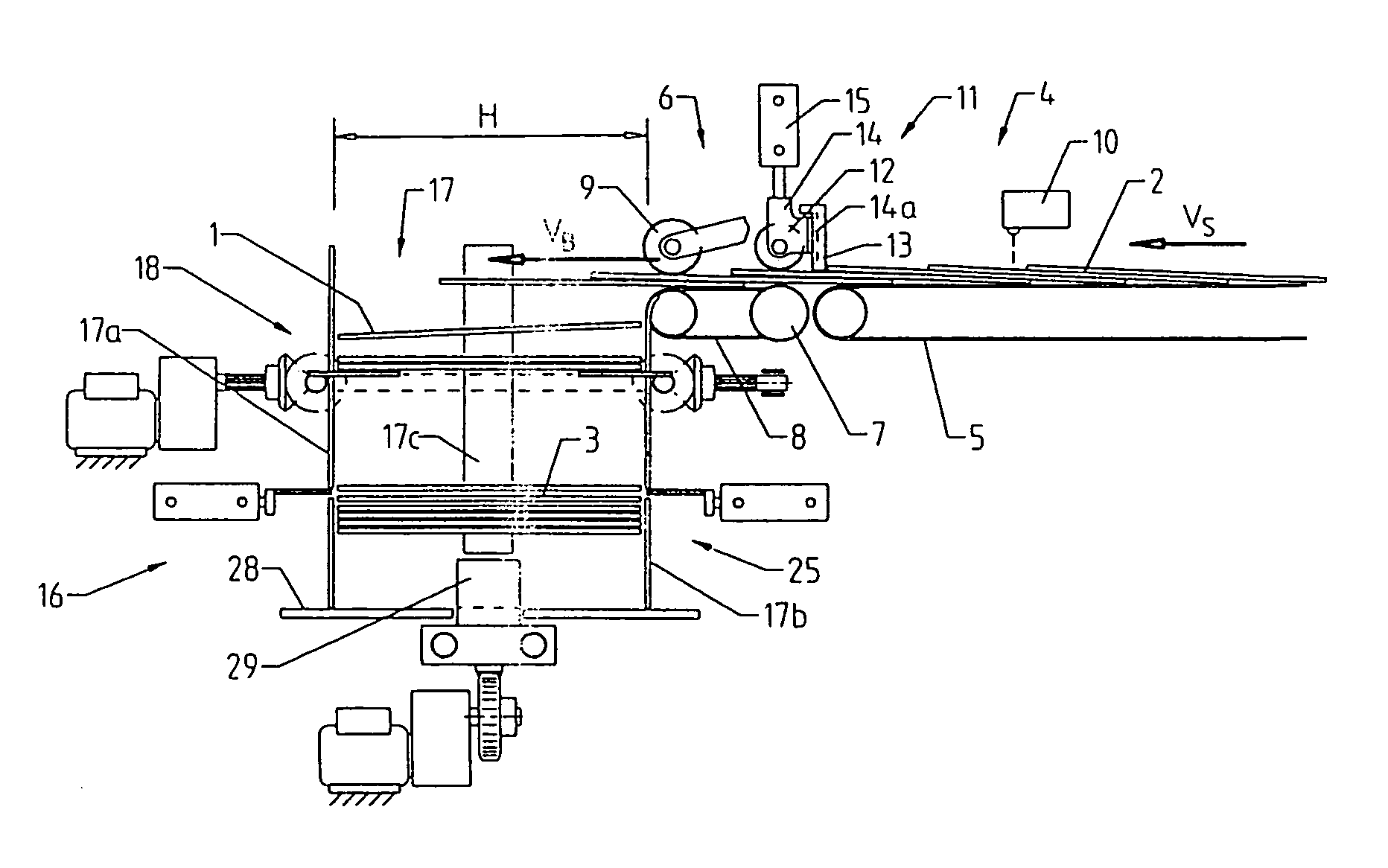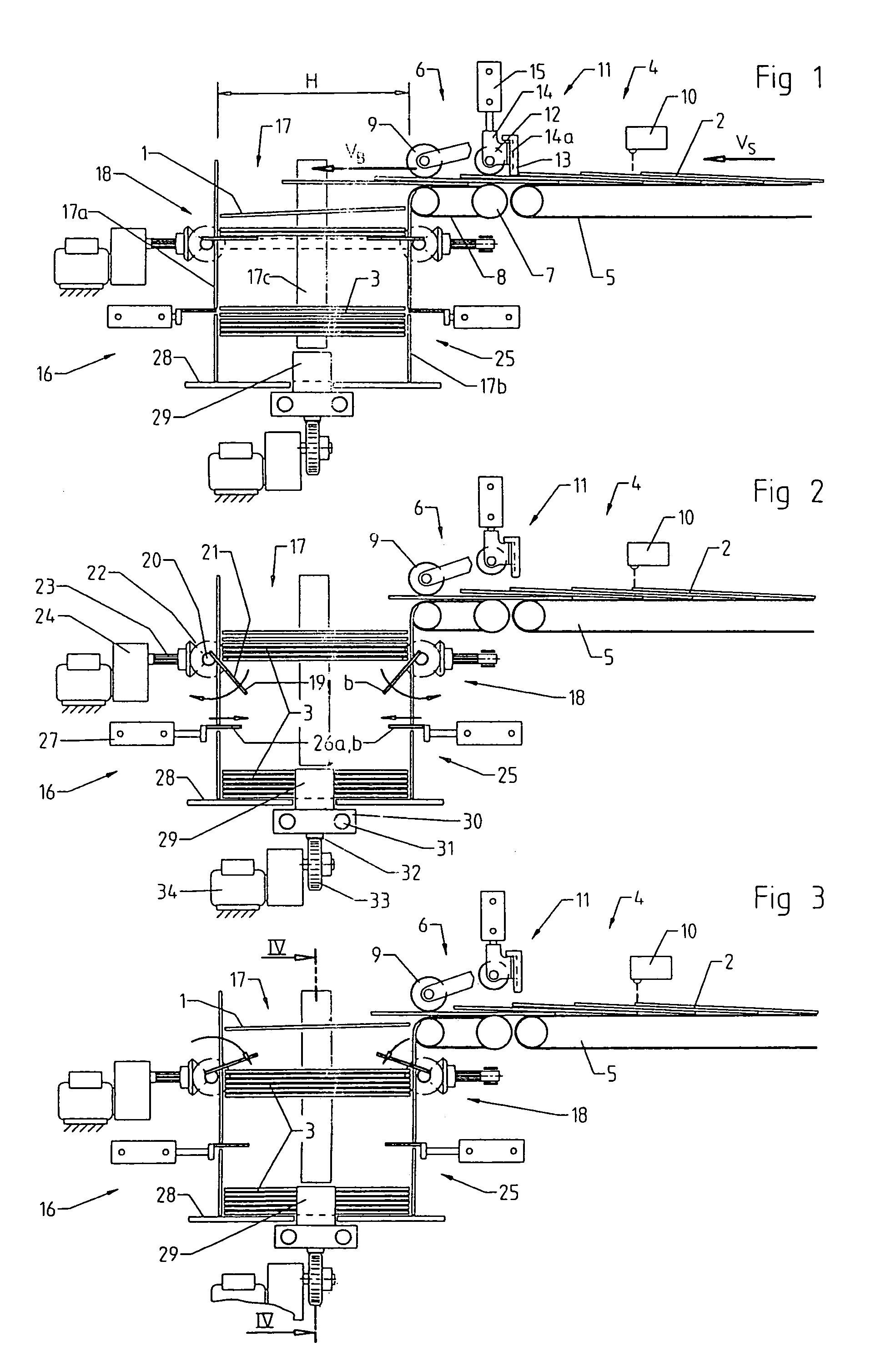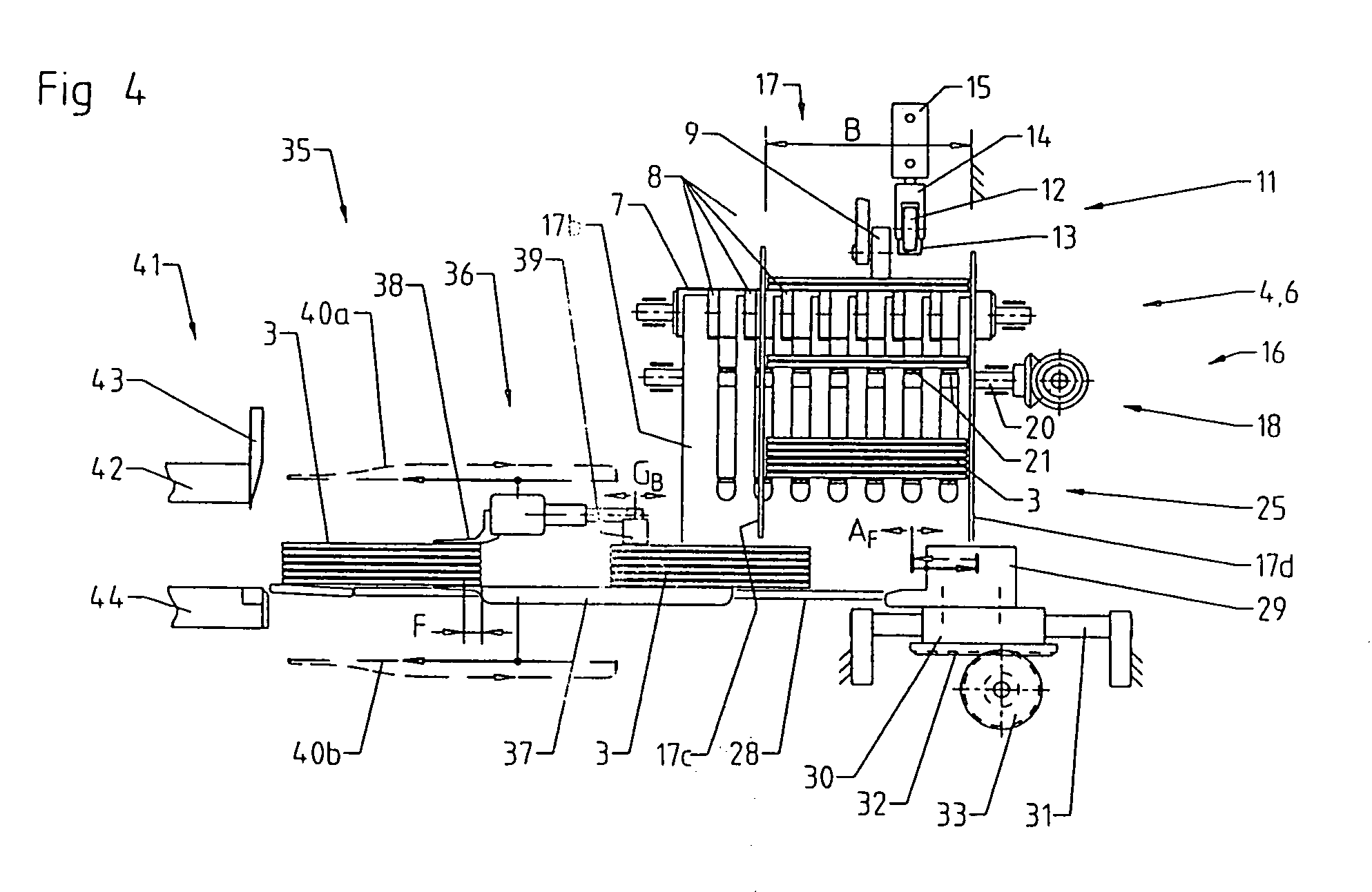Device for loading a three-knife trimmer
a three-knife and trimmer technology, applied in the direction of stacking articles, thin material handling, metal working apparatus, etc., can solve the problems of insufficient time between two book blocks supplied for opening and closing the upper magazine intermediate shelf, and the performance of the known pre-stacking device is limited, so as to achieve a simple structure, high feed rate, and the effect of reducing the feed speed
- Summary
- Abstract
- Description
- Claims
- Application Information
AI Technical Summary
Benefits of technology
Problems solved by technology
Method used
Image
Examples
Embodiment Construction
[0016]The loading device according to the invention comprises a feed conveyor 4, a stacking device 16, a delivery table 28 and an ejector 29, and is arranged upstream of the intake device 35 of a three-knife trimmer. The feed conveyor 4 is formed by a conveyor belt 5 driven continuously at a first velocity vS, and by an accelerator conveyor 6 located directly adjacent thereto in the feed direction and driven at a higher velocity vB.
[0017]The book blocks 1 to be trimmed are fed longitudinally with respect to their height H in an imbricated flow 2 to the stacking device 16, a following book block 1 in each case resting on the preceding book block 1. On reaching the accelerator conveyor 6, which consists of an accelerator roller 7 and a plurality of conveyor belts 8 arranged side-by-side, the book blocks are withdrawn from the imbricated flow 2 at the higher velocity vB and discharged into a magazine 17 of the stacking device 16, which magazine 17 is delimited by magazine side walls 17...
PUM
| Property | Measurement | Unit |
|---|---|---|
| stack height | aaaaa | aaaaa |
| thick | aaaaa | aaaaa |
| thick | aaaaa | aaaaa |
Abstract
Description
Claims
Application Information
 Login to View More
Login to View More - R&D
- Intellectual Property
- Life Sciences
- Materials
- Tech Scout
- Unparalleled Data Quality
- Higher Quality Content
- 60% Fewer Hallucinations
Browse by: Latest US Patents, China's latest patents, Technical Efficacy Thesaurus, Application Domain, Technology Topic, Popular Technical Reports.
© 2025 PatSnap. All rights reserved.Legal|Privacy policy|Modern Slavery Act Transparency Statement|Sitemap|About US| Contact US: help@patsnap.com



